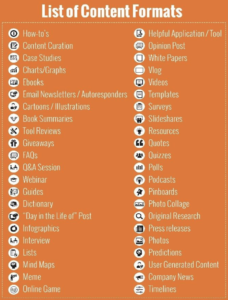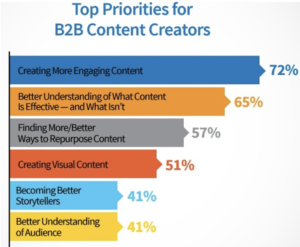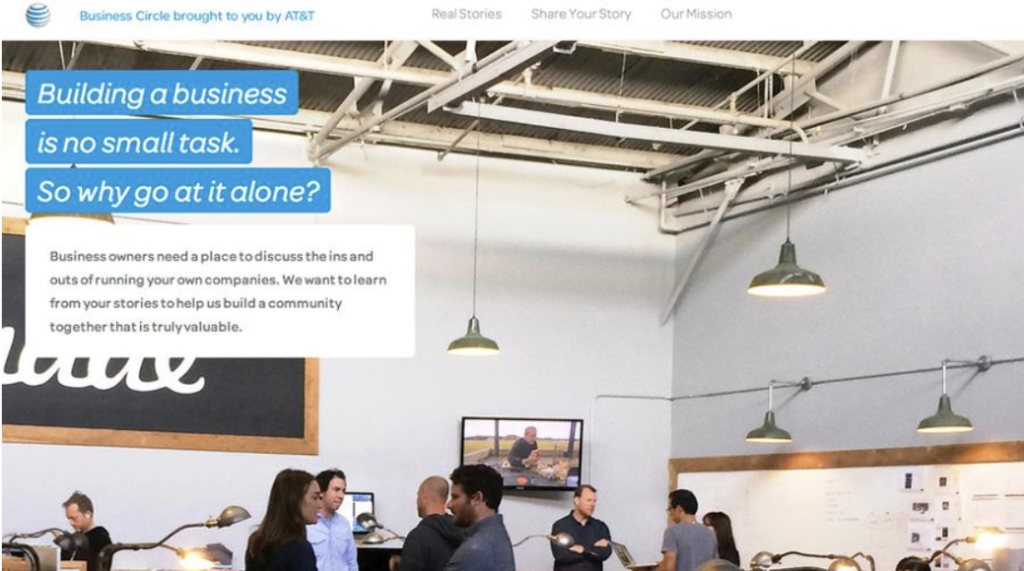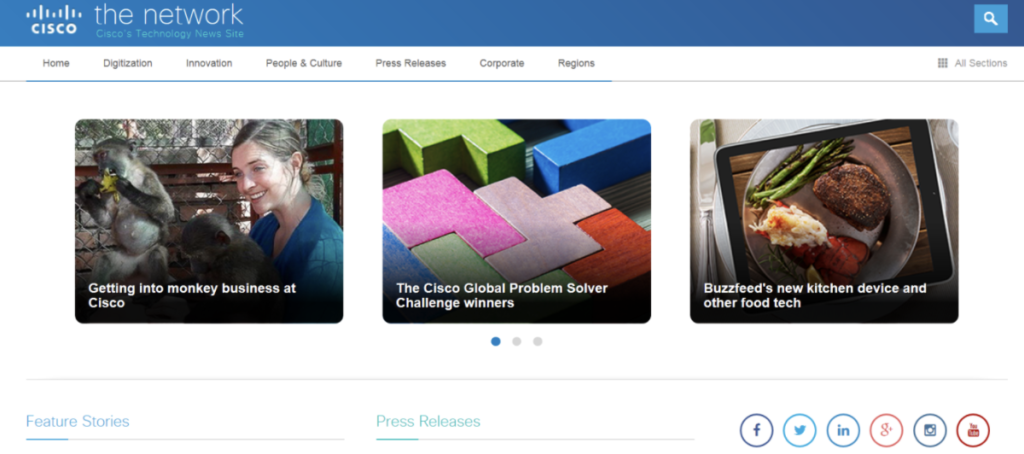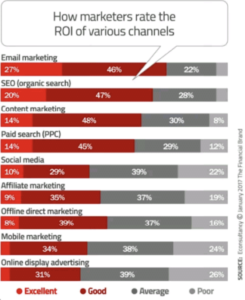In our technological world, content is a powerful tool that brands employ to achieve their set objectives. The power of content is tremendous as it can be used to entice both new and existing customers about the brand’s future products. In addition, content is an invaluable asset that can increase the search engine visibility of your company and help position it as a trusted advisor in your industry.
Every company needs to have a content marketing strategy. Content marketing is an approach to understanding the needs of a target audience, and to create and promote content that addresses those needs. The technological sector has found it increasingly difficult to create content marketing that engages and entertain their audience. The reason is obvious: the companies are engrossed in talking to themselves or about their products and services.
However, despite its importance, creating a content marketing strategy can be overwhelming. While it sounds simple in theory, it could be pretty difficult in practice. A bad strategy implies a failure to achieve the goals of the brand to reach the target audience. To avoid unnecessary failures, here is a guide on how you can develop a content marketing strategy to reach your set target.
1. Develop your plan
First, you need to develop a plan that covers everything you need to kickstart your marketing content. As a start, you need to define your goals. What is it that you want to achieve? Do you want to be a leader in your field, or position yourself as a thought leader? Outlining your goals helps you focus and keep you from veering off course. It also helps you identify emerging opportunities to market your content further. You also need to determine what type of content you wish to create. It could be blog posts, e-books, videos, podcast etc. Below is a list of types of content for your consideration.
2. Engage your readers
Great content is not often about its creators, but about the audience. Your first goal should be to build a personal connection with your readers. Eight seconds is the maximum attention span of the average reader. That’s all you’ve got to convince them that your article is worth reading and compel them to read to the end. The best way to achieve that aim is to centre your content on them rather than try to sell your product off the bat. Readers are getting increasingly interested in themselves and what’s in it for them. So, grab and hold their attention by making your content engaging; this is the topmost priority of content creators as you can see in the result of the survey below.
3. Build around their pain point
Before you start creating your content, you need to know the pain point of your audience. What are their needs? What problems or challenges do they face? When you’ve gathered your facts, you then tailor your content around these pain points. Show empathy for their problems and offer practical solutions on how to get by them. Content that solves problems attracts massive readership. Shape your content; be audience based and not product based. Readers want content that they can relate to; content that provides answers to their questions. Your aim should be to create content that solves their problems and make life easier.
Organisations and associations that build around pain points are often very successful. An example is Kosbit partner, AT&T’s Business Circle, a digital hub for small businesses. It focuses on providing solutions and resources for the latest technology, devices, and information. The Business Circle offers a place where entrepreneurs can join together to learn how to expand their ideas and enterprises. Along with workshops with expert advisers, and live events featuring top CEOs and small business experts, Business Circle will be contributing tips and advice from experts and entrepreneurs who offer tried and true tips on everything from retaining talent to upgrading your technological offerings to social media insights that will boost your business.
4. Make your content highly informative
In today’s content driven world, people are only interested in themselves as they simply do not care about your products and service but what’s in it for them. Your customers do not want you to sell to them; they wanted to you to educate them. Therefore, it is essential that you create content that engages, entertains and educates your audiences because what consumers say about you is more important than what you say about yourself.
People place a high premium on accurate and educative content. It is what builds active followership and transforms your audience into return readers. In a world where there are varieties of options, readers are actively seeking platforms where they can bestow their attention and time in exchange for something of value. It is important that you make your content worth the attention of your readers. Content marketing enables marketers to think and become like publishers and own the attention not rent it.
Pack a lot of helpful information into your content. Make use of statistics, graphs, pictorial illustrations, research findings, charts and so on. If you do make informative content your practice, you will develop loyal readers who will have deep trust in your brand. As Rand Fishkin put it best, ‘Remember that the best way to sell something is not to sell anything. Instead, earn the awareness, respect, and trust of those who might buy and that makes it easier to sell.
In an obvious understanding of this principle, GE Reports creates content to educate and inform their audience. Their goal is to engage readers and shift brand perception, and their approach is by entertaining and educating their audience. With this goal in mind, they can make tech human with content. This strategy leads to their success in content marketing. Their blog enjoys readership from hundreds of thousands, and their content regularly goes viral. All these ties back to the GE brand.
Therefore, your primary aim should be to create content that will educate, inform, and ultimately drive people into a buying process.
5. Have an owned media; don’t build your house on rented land
Have your own blog or platform where you constantly publish your content and leverage other platforms too. Many brands tend to focus on one at the expense of the other, but this is unhealthy for your content marketing. You have to take what you’ve got to where the audience is. If you don’t go where the people are, you won’t get noticed. Some social media platforms boast of hundreds of millions and even billions of users who may be unaware of your brand. Some of the popular platforms are Instagram, LinkedIn, Facebook, and Twitter. If you focus solely on your blog, you miss the opportunity to reach new readers and scale your audience quickly. On the other side of the coin, if you focus only on social media, you are on rented land where you have no control and are without a backup. Engage users on these platforms, share your content and always link it back to your website. However, your primary devotion must be to your owned media, and you should never sacrifice this for anything.
Cisco, for instance, focuses on owned media, not on rented land. They think like a media company and do not want to buy or rent media attention – they own theirs. While other platforms may look inviting to brands who want quick access to a bigger audience, Cisco maintains its attention on its media as Neal once said, ‘We have control over that… Facebook can always change the rules of the game.’
Cisco views marketing as a service to provide value to customers and has employed the use of digital stories to engage its readers for years. After launching The Network (its news website) in 2011, the site has grown to feature stories about technological trends written by professional journalists and reporters. Cisco’s storytelling attempts to give answers to the interesting question: ‘How will the future of the Internet look?’
6. Communicate better visually
Ever heard the saying, ‘A picture is worth a thousand words’? It is still true today. According to CMI B2B Content Marketing report, around 51 per cent of B2B marketers prioritised creating visual content assets in 2016.Visual content platforms are experiencing more sign ups every day and are getting more popular than ever. They provide unique opportunities for people to share their stories through images which create a more profound effect than textual content. Your brand can leverage these platforms – such as Pinterest, Snapchat, and Instagram to create meaningful connections with your audience. Also, make use of images in your website to drive deeper engagements. Pictures make content more appealing and make the reading experience pleasurable. Only add images or videos that increase or add to the value of your content. Therefore, you need to incorporate more visual and interactive content in your overall marketing strategy.
The GE Show is designed to help us understand the technologies that are changing our lives. GE provides stunning interactive games and interesting videos that tell the stories behind their technology. Each episode is an experience that builds brand value and adds an element of play and fun to a viewer’s day. In other words, your audience gets to have fun while they learn. Your business can succeed at visual marketing. The key is to create differentiation yourself and stand from the noise.
7. Stay unique
While trying to achieve relevance like existing competitors, many brands tend to imitate them. They end up sounding like every other brand. According to Seth Godin, ‘You’re either remarkable or invisible – so be remarkable instead’; this makes it difficult for them to shine because they are merely a shadow of other brands. To remain unique, develop your unique story, your brand needs to give your audience new insights that have a different perspective from others. Readers also love content that makes them laugh, cringe or squeal. Also, you could create content that is timely for your audience. The right timing for your content based on current events also makes your brand stand out from the rest. All in all, it is important that you develop your voice rather than settle for being an echo.
A classic demonstration of this principle in B2B content marketing is a blog run by Kosbit. The blog is largely based on content curated by employees, and this makes it different from contemporary blogs. Kosbit’s CMO, Fatmir Hyseni, says, ‘We developed a process to curate social content in a way that leverages our employees. We want to publish what they’re sharing and what’s grabbing their attention. It’s a combination of a social process, plus an employee filter that crowd sources what they are saying and sharing, and uses that as a discovery tool.’
8. Be consistent
Whether you are using your media or you are using ‘rented land,’ you need to remain consistent in creating content. An effective content marketing strategy requires consistency. It is easy to update your website or blog and your social media accounts a couple of times, but you need to update regularly.
A study by McKinsey & Company of 27,000 American consumers found that a consistent customer experience across the entire customer journey increases customer satisfaction, builds trust, and boosts loyalty. In a related article, the authors noted, ‘It may not seem sexy, but consistency is the secret ingredient to making customers happy.’
Consistency makes some brands reap more benefits than others because they witness an influx of more visitors to their site. As Joe Pulizzi says, ‘Content marketing is a marathon, not a sprint – therefore brands must be consistent.’ Most of the great content sites are regularly updated, and yours should be too! As Robert Rose says, ‘Excellent content, combined with a consistent publishing schedule, creates ‘anticipatory delight’ for your audience.’
9. Build an email list
Every successful content marketing strategy share one thing in common: an email list. An email list is an effective way to build an audience of email subscribers as a distribution channel to attract web traffic and customer data. For example, if you had a list of about 30,000 emails and you sent an email about a new post on your website, imagine the amount of traffic you can trigger at once! So while you update your website with content, provide an option for your readers to subscribe to your email list. In a research by Econsultancy, 73 percent of companies rate email marketing as excellent or good in terms of ROI. Email remains as one of the priorities for marketers because you can control it. See the graphical result of the survey.
10. Be patient
In the technology sector, marketers often place great emphasis on lead generation, and there’s immense pressure to meet the sales target. However, you need to be aware that you can generate more leads by being helpful rather than trying to sell a product. To be helpful to your audience, you need first to build a relationship with them, and this process takes time. It takes time for them to take an interest in you, like you and trust the information you share. People first believe in your content before they have faith in your products. So give them a reason to do just that by offering them value. Overall, you have to be patient to see the content success as it does not happen overnight.
Summary
As you can see, then, effective content marketing isn’t just about telling customers what you can do; it’s about engaging with them and giving them something that’s genuinely useful or informative. If you can educate potential customers, then they can see you know what you’re saying. They will, therefore, be more likely to turn to you when they need the type of service you provide. Take a leaf out of the tech giants’ book and try this tried-and-tested marketing approach. You’ll be amazed by the sharp turn of fortunes!

